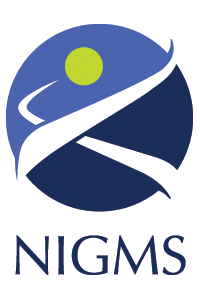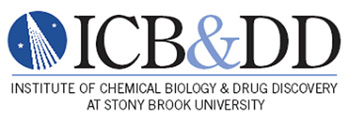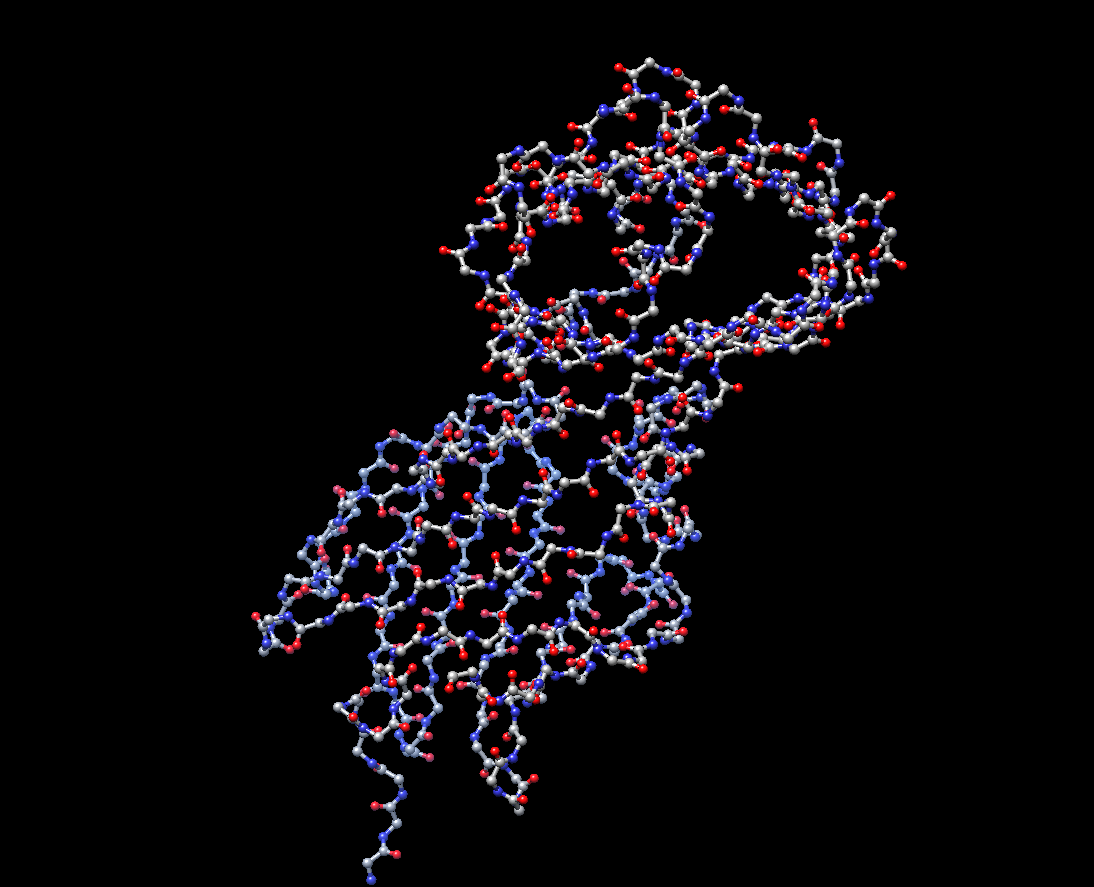Classes
Typical Biochemistry and Structural Biology Course Sequence:
In addition to the three-course sequence of BSB 520, CHE 542 and 543, students take at least one course in another area of Biochemistry that complements their research interests. Students typically take one or two graduate-level courses offered by the Molecular and Cellular Biology, Chemistry, Molecular Pharmacology, Microbiolgy, or Biophysics Graduate Programs. These courses are chosen in consultation with the program advisor and/or mentor.
Rotation schedule: 1)September to the third week of November; 2)First week of December to the third week of Ferburary; 3)First week of March to the second week of June.
Typical Chemistry Course Sequence:
In addition to the three-course sequence of CHE 541, 542 and 543, students take at least one course in another area of chemistry that complements their research interests. Students typically take one or two graduate-level courses offered by the Molecular and Cellular Biology, Chemistry, Molecular Pharmacology, Microbiolgy, or Biophysics Graduate Programs. These courses are chosen in consultation with the program advisor and/or mentor.
Rotation schedule: 1)August 27 to November 2; 2)November 5 to January 25; 3)Optional third rotation.
Typical Microbiology Course Sequence:
In addition to the three-course sequence of BSB 520 (MCB 520), CHE 542 and 543, students take MCB 517, MCB 515, MCB 565, HBM 503, HBM 640 and HBP 533.
Rotation schedule: 1)September to the third week of December; 2)First week of January to the first week of April: 3)First week of April to the fourth week of June.
Available Classes
CHEMICAL BIOLOGY CORE CURRICULUM:
CHE 541: Biomolecular Structure and Analysis, Fall
The structures of biological macromolecules and the relationship of their structure to biological function are described. Methodology employed to study macromolecules is also discussed. Topics include chemical and physical properties of cell and tissue constituents, including carbohydrates, lipids, nucleic acids, proteins, and peptides.
CHE 542: Chemical Biology 1 (Does NOT need to be taken before CHE 543)
The reactivity and physiological function of biological macromolecules and their cofactors are described at the chemical biochemical level. The emphasis of this course reflects recent advances in chemical biology. Possible topics include catalysts, reaction mechanisms, correlation between three-dimensional structure and reactivity, receptor-ligand interactions in extracellular and intracellular signaling, protein folding in vitro and in vivo.
CHE 543: Chemical Biology 2 (Can be taken out of sequence, i.e. before CHE 542)
A broad overview of chemical biology and biotechnological techniques with an emphasis on those applied intracellularly and in model organisms. Topics covered expand from biosynthesis and chemical synthesis of macromolecules (DNA, proteins, oligosaccharides) to imaging and trafficking of both endogenous and exogenous molecules. As a result, strong emphasis is placed on subcellular organization.
EXPANDED (ELECTIVE) CURRICULUM:
GRADUATE BIOCHEMISTRY BSB 520, FALL
Several topics in modern biochemistry are treated at an advanced level. Topics covered include protein structure, methods of peptide and protein analysis and purification, enzyme kinetics and mechanisms, and enzyme regulation.
INTRODUCTION TO STRUCTURAL BIOLOGY BSB 512, SPRING
A broad overview of the theoretical principles and experimental methods used in structural studies of proteins and nucleic acids. The course covers the fundamentals and applications of absorption spectroscopy, including both circular and linear dichroism, vibrational spectroscopy, including infrared and Raman, fluorescence spectroscopy, nuclear magnetic resonance spectroscopy, and X-ray diffraction.
COMPUTATIONAL METHODS IN BIOCHEMISTRY AND STRUCTURAL BIOLOGY BSB 515, FALL
An introductory course in the computational methods used in biochemistry and structural biology. The course emphasizes the resources available on the World Wide Web for sequence searching and analysis, bioinformatics, the prediction of protein secondary and tertiary structure, and the graphical analysis of proteins and nucleic acids.
MEMBRANE BIOCHEMISTRY BSB 517, FALL
This course extends the graduate course in biochemistry to encompass the molecular architecture of membranes and the organization, functions, and assembly of lipids and proteins in biological membranes.
ADVANCED STRUCTURAL BIOLOGY BSB 580, SPRING
Advanced topics in X-ray crystallography and NMR spectroscopy. Current theory, experimental methods, and applications are covered in detail for advanced students.
CELL BIOLOGY MCB 656, SPRING
An introduction to the structural and functional organization of cells and tissues and the way structure relates to function. Particular emphasis is placed on nuclear and chromosomal structure, signal transduction, protein translocation, the cytoskeleton, and the extracellular matrix. The course focuses on the interaction of the cellular structures and components and their regulation as well as the organization and interaction of cells in tissues. The course is comparative and includes examples of cells and tissues from vertebrates, invertebrates, plants, and prokaryotic systems.
MOLECULAR GENETICS MCB 503
Introduces the classical work and current developments in lower and higher genetic systems. Covers gene structure and regulation in prokaryotic and eukaryotic organisms, mutational analysis and mapping, transposable elements, and biological DNA transfer mechanisms. Bacteriophage as well as lower and higher eukaryotic systems are used to illustrate aspects of molecular genetic structure and function. This course is offered as both MCB 503 and HBM 503.
CHE 501: Instrumental Methods, Spring
Practical and theoretical aspects of instrumentation in chemistry. The primary emphasis is on contemporary methods of molecular structure determination such as X-ray crystallography, NMR, IR, and MS. Other topics may also be presented.
CHE 502: Mechanistic Organic Chemistry, Spring
Important reaction mechanisms and the methods by which they are studied. Substituent and medium effects on reactions proceeding through concerted mechanisms and unstable intermediates are discussed.
CHE 503: Synthetic Organic Chemistry, Spring
A survey of the most important organic reactions from the viewpoint of synthetic utility, including many recent innovations in this field. Throughout the discussion of these methods, emphasis is placed upon their use in the synthesis of complex organic structures.
CHE 504: Structure and Reactivity in Organic Chemistry, Fall
Electronic and stereochemical theories relating to organic structure and reactions. Topics such as bonding, strain, aromaticity, MO theory, molecular rearrangements, pericyclic reactions, and photochemistry are covered. This course is intended to provide a foundation of knowledge at the beginning graduate level as preparation for advanced subjects in CHE 502 and CHE 503, and is complementary to CHE 501.
CHE 511: Structural Inorganic Chemistry, Fall
Properties and reactions of inorganic compounds are considered from the viewpoint of molecular and electronic structure. The modern bonding theories used in inorganic chemistry including molecular orbital, valence bond, and ligand field theories are developed using symmetry and group theory. Selected main group, transition metal, and organometallic compounds are discussed. An introduction to crystallography and solid-state structure is included.
CHE 514: Transition Metal Chemistry, Spring
A survey course with an emphasis on the transition metals. Reaction mechanisms, synthesis, and structure are covered. Specific areas of concern include coordination chemistry, organometallic chemistry, bioinorganic chemistry, and selected topics from solid-state and non-transition metal chemistry.
CHE 515: Advanced Inorganic Chemistry, Spring
A topical course with an emphasis on the current literature. Subject matter varies and is announced in advance. Possible subjects include reaction mechanisms, organometallic chemistry, bioinorganic chemistry, and physical inorganic chemistry.
CHE 521: Quantum Chemistry 1, Fall
Quantum theoretical concepts are discussed. Schrödinger wave mechanics and related mathematical techniques are illustrated by treatment of systems of chemical interest. Designed to form the theoretical basis for the study of chemical bonding, molecular structure, spectroscopy, and molecular collision phenomena.
CHE 522: Molecular Spectroscopy, Spring
A detailed description of the theory and practice of molecular spectroscopy. Topics include the interaction of molecules with electromagnetic radiation and the time evolution of molecular energy states.
CHE 523: Chemical Thermodynamics (crosslisted with ESM 511), Fall
A rigorous development of the fundamentals of thermodynamics and its application to a number of systems of interest to chemists, such as electrochemical cells, gases, and homogeneous and heterogeneous equilibrium. An introduction to statistical mechanics will also be included.
CHE 524: Magnetic Resonance, Spring
This course provides an introduction to the fundamental quantum mechanics of the magnetism of spin-1/2 (and higher) particles. It includes a study of the Bloch equations (the responses of the magnetism to continuous wave and pulsed irradiation) and a discussion of the experimental hardware and techniques commonly employed. Topics covered include the basics of the spin Hamiltonian (chemical shifts, J, dipolar, and quadrupolar couplings), dynamics and relaxation 1-D spectroscopy (spin and chemical exchange, lineshapes, spin echos, etc.), 2-D spectroscopy (homonuclear and heteronuclear correlation), techniques for studies of solids and liquid crystals (magic angle spinning, cross polarization, quadrupolar echo), and the principles of magnetic resonance imaging. Applications to the biological and material sciences, as well as chemical problems, will be discussed.
CHE 525: Theoretical Chemistry
This course stresses the physical theory underlying chemical phenomena. Special emphasis is given to advanced topics in electronic structure theory, molecular dynamics, condensed matter and surfaces, many-body and quantum ensemble theory, and the interaction of light and molecules.
CHE 528: Statistical Mechanics, Spring
Statistical theory of equilibrium systems and rate processes. Ensemble theory, spatial and time correlation functions. Model systems and methods of estimating their properties. Designed to enable the student to use the current literature dealing with application of statistical mechanics to problems in chemistry.
CHE 535: Introduction to Computational Structural Biology (crosslisted with AMS 535), Fall
This course will provide an introduction to computational structural biology with application to drug design. Methods and applications that use computation to model biological systems involved in human disease will be emphasized. The course aims to foster collaborative learning and will consist of presentations by the instructor, guest lecturers, and by course participants with the goal of summarizing key methods, topics, and papers relevant to computational structural biology.
CHE 542: Chemical Biology, Spring
The reactivity and physiological function of biological macromolecules and their cofactors are described at the chemical biochemical level. The emphasis of this course reflects recent advances in chemical biology. Possible topics include catalysts, reaction mechanisms, correlation between three-dimensional structure and reactivity, receptor-ligand interactions in extracellular and intracellular signaling, protein folding in vitro and in vivo.
CHE 603: Special Topics in Bio-organic Chemistry, Fall
The subject matter varies depending on interests of students and faculty. Possible topics include asymmetric synthesis and natural product synthesis.
CHE 606: Supramolecular Chemistry
CHE536: Molecular Modeling of Biological Molecules (crosslisted with AMS 536)
This course is designed for students who wish to gain hands-on experience modeling biological molecules at the atomic level. In conjunction with the individual interests, molecular mechanics, molecular dynamics, Monte Carlo, docking (virtual screening), or quantum mechanics software packages can be used to study relevant biological system(s). Projects will include setup, execution, and analysis. Course participants will give literature presentations relevant to the simulations being performed and a final project report will be required. Familiarity with UNIX (Linux) is desirable.
HBH 553: Signal Transduction, Spring - odd years
The course will emphasize fundamental concepts in signal transduction (e.g., membrane-protein and protein-protein interactions, amplification of signals), and individual lectures will apply these concepts at each stage of cell signaling from the cell surface to the nucleus, where signal transduction leads to specific gene expression. Crosslisted as HBY 553.
HBH 631: Principles of Drug Action (1 credit)
This course is designed to provide a quantitative understanding of the basic principles by which drugs interact with living systems at the cellular and organismal levels. Topics include the mechanisms of drug transport through membranes, interaction of drugs with receptors and binding proteins, drug distribution, biotransformation of drugs, enzymes of stage I and stage II metabolism, cytochrome p450 gene families and regulation of p450 gene expression, mechanisms of renal excretion of drugs and metabolites, pharmacokinetics of constant drug infusions and intermittent dosing regimens, and applications of pharmacokinetic principles to protein and mRNA induction and turnover. Students apply pharmacological principles in a series of problem solving exercises.
HBH 632: Molecular Interactions of Drug Structures Toxicity (1 credit)
The course provides an overview of the most current approaches to analyze and understand the interactions between a drug and its target and how this information is used for the design and development of new drugs. The detailed structural analysis of drug target interactions by X-ray crystallography and NMR spectroscopy as a basis for the design of new drugs will be discussed on the basis of very recent examples. Advanced computer simulation techniques will be discussed and will include the use of molecular mechanics energy functions to optimize biomolecular structures, predict ligand binding modes and energetics.
HBH 633: Physiological Action of Drugs (1 credit)
Selected applications of drugs used in clinical medicine, illustrating current concepts and problems at the intersection of pharmacological basic science and therapeutic treatment. Settings to include the management of diabetes, metabolic diseases, and cardiac disease.
HBH 635: New Concepts in Chemotherapy (1 credit)
This course compares mechanisms of action of drugs used for antibacterial and anticancer chemotherapy. The lecture material stresses how selective toxicity is achieved in each case with either cell death or inhibition of cell growth as the ultimate mechanism. Original research papers are discussed on mechanisms whereby cells develop resistance to chemotherapy and novel strategies to overcome this resistance.
HBH 636: Drug Discovery & Toxicity (1 credit)
An advanced series of lectures and student presentations will develop a basic understanding of modern methods of drug discovery and drug receptor interactions. Topics include the structural and physiological factors essential for drug action, quantitative structure activity relationships, and unintended toxicities produced by drug substances.
HBH 655: Neuropharmacology (even years)
An advanced course for graduate students interested in developing an understanding of neuropharmacology and research on this topic. Following a general introduction to the nerve cell structure, synaptic and chemical transmission, three themes receptors, receptors as channels, and G-protein-coupled receptors are developed. Recent advances in cell and molecular biology provide the framework for instruction and discussion. This course is offered as both HBH 655 and BNB 655.
HBM 640: Molecular Mechanisms of Microbial Pathogenesis
The course focuses on principles of microbial pathogenesis as illustrated by the best characterized viral, fungal and bacterial pathogens. Emphasis is placed on the interaction of pathogens with the host at the cellular and organismal levels with particular attention to the influence of pathogens on cellular signaling mechanisms, the immunological response to infection, and fundamental mechanisms of viral and bacterial pathogenesis. Fall, 3 credits.
HBP 533: Immunology
This course covers the basic principles of immunology for graduate students in biological sciences and includes elements and cells of innate and adaptive immunity, the definition of antigens and antibodies, specificity of the immune response, immunoglobulin structure, the genetics of immunoglobulin synthesis, cellular cooperation in the immune response, hypersensitivity, tolerance, and transplantation. Fall, 3 credits.




